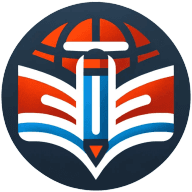4 Ways EdTech Creates More Inclusive Classroom Environments
Modern educational technology is transforming classrooms into more inclusive environments through four key strategies. Educational experts highlight how thoughtful design, multi-format digital signage, diverse content, and adaptive AI tools can effectively support all types of learners. These innovative approaches help teachers create learning experiences where every student can access and engage with material regardless of their individual needs or learning preferences.
Design for Equalizing Not Just Accessibility
One of the most powerful things I've seen in EdTech isn't just accessibility — it's dignified accessibility. There's a huge difference between "making learning possible" and "making it feel normal."
When we built Listening.com, we noticed students who used screen readers or text-to-speech tools often felt singled out. Their tools helped, but they were clunky, robotic, or obviously "assistive." It separated them from the rest of the class. So we focused on creating human-quality audio that felt like it belonged — something everyone would want to use, not just those with learning differences or visual impairments.
That small design shift — from helping to equalizing — changed everything. When every student could listen to the same material in a natural voice, it erased that invisible line between who "needed" EdTech and who was "just using a cool tool." Suddenly, inclusion wasn't an accommodation — it was a shared experience.
The biggest impact came not from accessibility itself, but from normalizing it. Because true inclusion isn't about giving extra help to a few people — it's about designing things so no one needs special help in the first place.

Multi-Format Digital Signage Engages All Learners
In one of our education projects at AIScreen I got to integrate digital signage into classrooms to create a more inclusive learning environment. Many schools struggled to engage students with different learning styles—visual, auditory, neurodiverse learners—so I worked with teachers to create a signage driven system that delivered dynamic content.
The most powerful feature was multi-format content delivery. I used our platform to display real-time captions, visual summaries and interactive prompts to support live lessons. For students with hearing or attention challenges having key points and visuals on screen made a huge difference.
I also added language translation widgets and adaptive content scheduling so diverse classrooms could see content in multiple languages at once. Teachers reported higher participation rates and better retention from students who previously struggled to keep up. It reinforced my belief that inclusive education works when technology adapts to every learner—not the other way around.

Diverse Content and Personal Interest Connections
I've noticed that the newish batch curriculum that Novakid uses, makes use of diverse people - African, Asian and white. So different cartoon families for instance, come in all colours and representations. I think this helps their diverse clientele.
With all students, however, the best thing is to build your relationship with them and find out their interests. So then, for their rewards, I can let Elsa from Vietnam watch K Pop Demon Hunters, or let my Indonesian student play online football. My Italian student shows me exactly how she is sailing in her spare time.

AI Tools Adapt Complex Topics Effortlessly
Inclusion in classrooms isn't just about access — it's about personalization. At TeachBetter.ai, we've seen how simple AI tools can make learning more inclusive by adapting to each student's pace and style. For example, our Concept Explainer and Personal Learning Coach help teachers reframe complex topics into simpler, multilingual explanations or visual summaries, ensuring no student feels left behind. The biggest impact came from empowering teachers — giving them tools that instantly differentiate instruction without adding extra workload. That's real inclusion in practice.


